Two years after we began reinventing our spaces, here’s a look at what we did and what we’ve learned along the way.
“This past year Steelcase reported its best year since we began to feel the impact of the economic downturn in 2009. We didn’t just survive the global recession—we came out of it healthier, stronger and ready for the future.
It may be tempting to use a recession as a time to hunker down, but instead we reinvented ourselves, accelerated change, and invested in our future. For example, we invested in our brand, globalized our product platforms and worked towards becoming a globally integrated enterprise.
We knew the office was changing, but it wasn’t going to go away. While we had to free up excess space, we looked at the problem through a different lens. We believe that, more than ever, people need places where they can come together, feel connected and build a strong sense of purpose.At the same time, we were approaching our 100th anniversary and faced the same dilemma as many other companies: excess real estate. In some parts of the world major organizations took it as far as to ask, ‘If people can work anywhere, do we really need offices anymore?’
We challenged ourselves to use our real estate strategy to do more than just cut costs. We viewed it as an opportunity to optimize our real estate at our Global Headquarters campus in Grand Rapids, Mich., by activating space that as relatively unused before, as well as use our workplace strategy to accelerate the evolution of our culture.
It was a tipping point for our company. When our leadership team reviewed the real estate strategy and presented the financial argument, it was an easy decision on those terms alone. Real estate and costs would be reduced by half. From a numbers perspective, it was an easy call.
But as a leadership team we said we wouldn’t do it if it didn’t shape the culture of the company. It was the most important reason to do this project then, and it remains the most important one today. Employees are together on one campus where they can easily connect with their colleagues, their work and the organization. There is a buzz that just wasn’t there a couple of years ago. It’s undeniable.
Our new work environments have changed us as an organization. It’s obvious to everyone, including visitors to our spaces who tell us they can sense the essence of our culture and brand through the space. And they are just as interested in learning more about that as they are in our furniture.
This is how we did it…”
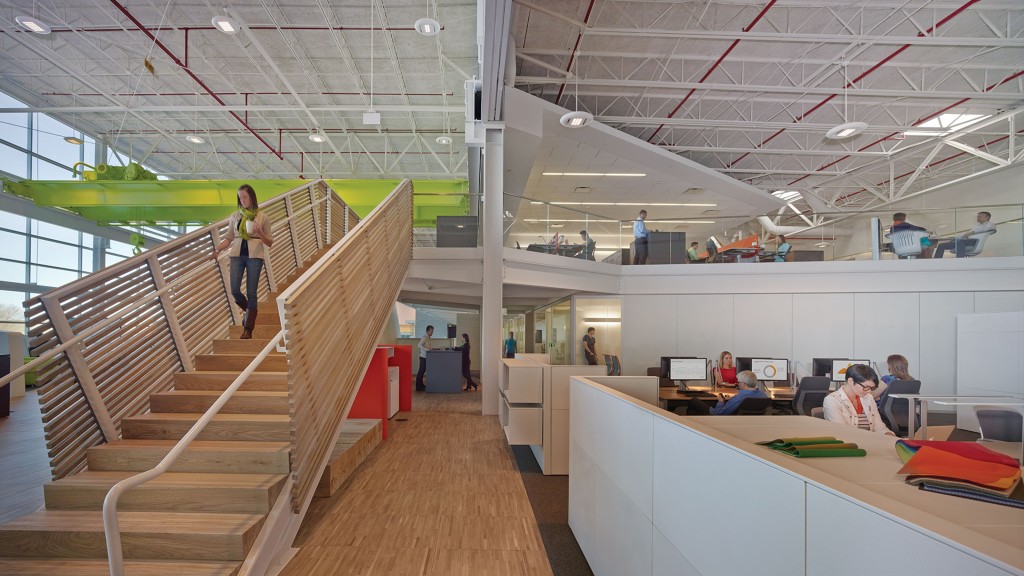
OUR STORY
In the face of an economic crisis, the first thing business leaders think about is rarely their offices. Unless, of course, it’s on a list of things that can be cut to save money. Which is what a lot of companies were doing in 2009 just after they watched well-established organizations collapse around them. There was a lot of uncertainty everywhere, and Steelcase, which serves many Fortune 500 companies, had a front-row seat to the chaos.
It was with that backdrop that we made a tough decision. Rather than simply cut excess real estate as a survival tactic, the company was looking further ahead. “We had our sights set on a major change, a paradigm shift. Not only in space, but also in technology, work process and culture,” says John Hughes, principal of applied research & consulting, our workplace consulting practice at Steelcase. “The struggle to effectively align strategy, brand and culture is a concern we hear about regularly from company executives around the world. We were like so many other organizations and we chose to invest our resources toward that mission, rather than wait out the recession.”
This was the driving force behind our reinvention project, dubbed Connect 12 internally, a multi-year odyssey to reinvent the headquarters campus and help employees from around the globe to be physically and virtually more connected. We chose our 100th anniversary in 2012 as a rallying point for change. The project would reinvent existing buildings on our main campus, including former manufacturing facilities, plus off-load unused real estate and create an interconnected global network of spaces. These spaces would challenge the purpose of the workplace and test new ways of working. “We set out specifically to use the work environment to improve employee engagement and retention, to boost internal communication and renew our company culture,” says Hughes.
“To help us develop a workplace strategy that could help the company achieve its goals, we used our user-centered research, design and development process. By surveying people from all levels of the company, conducting workshops, capturing insights and data from ethnography and sensor technology, as well as spending countless hours just observing people, we were able to gauge what was working and what wasn’t.”
The insights gathered from these activities were used to build behavioral prototype spaces to test the new work environments and help employees understand the impact of the changes. Some groups were asked to live in the prototype spaces to help validate the design direction.
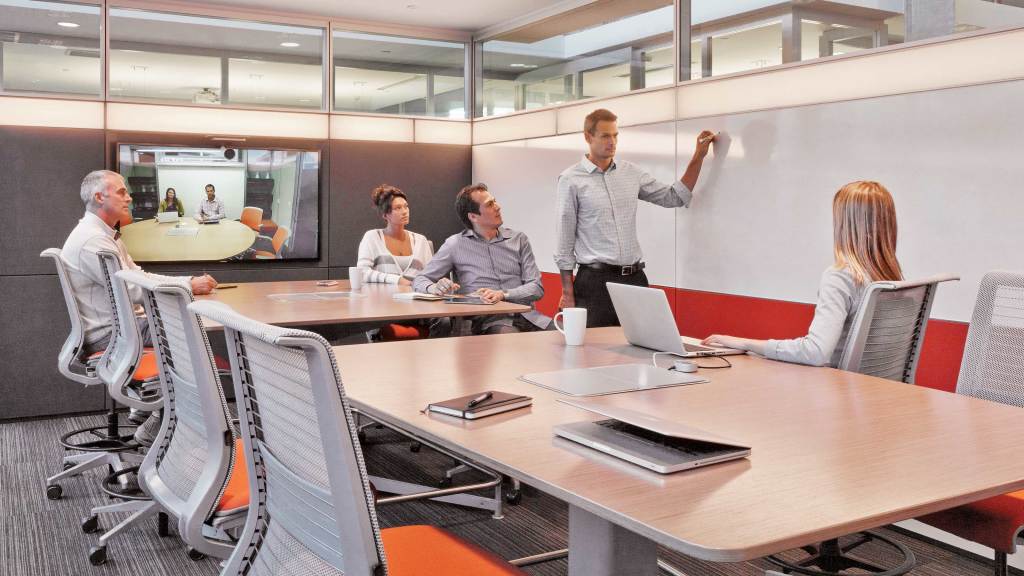
The strategy was quickly boiled down to a catchphrase that captured its essence: “best place.” It encapsulated the plan to create a campus environment with an ecosystem of spaces that support diverse activities and work style preferences. The new spaces would not only support employees in more mobile work styles, they would actually attract them. “The ‘best place’ is where you want to work because you have a choice about when and where and how you work,” says Cherie Johnson, director of global design for Steelcase. “Our goal was to democratize the space so that anyone could work anywhere.”
At its essence, the “best place” concept is about supporting the wellbeing of employees in a holistic way, considering emotional and cognitive needs as much as physical ones. There is a range of spaces that support focused work, collaboration, learning, socializing and rejuvenation. For example, if employees have a task that requires deep focus and concentration, they can perform better cognitively if the space supports that mode of work. Routine tasks don’t create the same cognitive load and can be done in areas where there is more stimulation and interaction. People are also free to choose the kind of space in which they want to work based on their emotional frame of mind. Sometimes people crave interaction and want to be in the middle of activity and other times they need more solitude. Physically, people need to move throughout their day and change postures—not just to sit or stand, but also to lounge or perch. Movement is essential to maintaining energy levels and stamina. And all three aspects of wellbeing—physical, cognitive and emotional— are essential to building a high level of employee engagement.
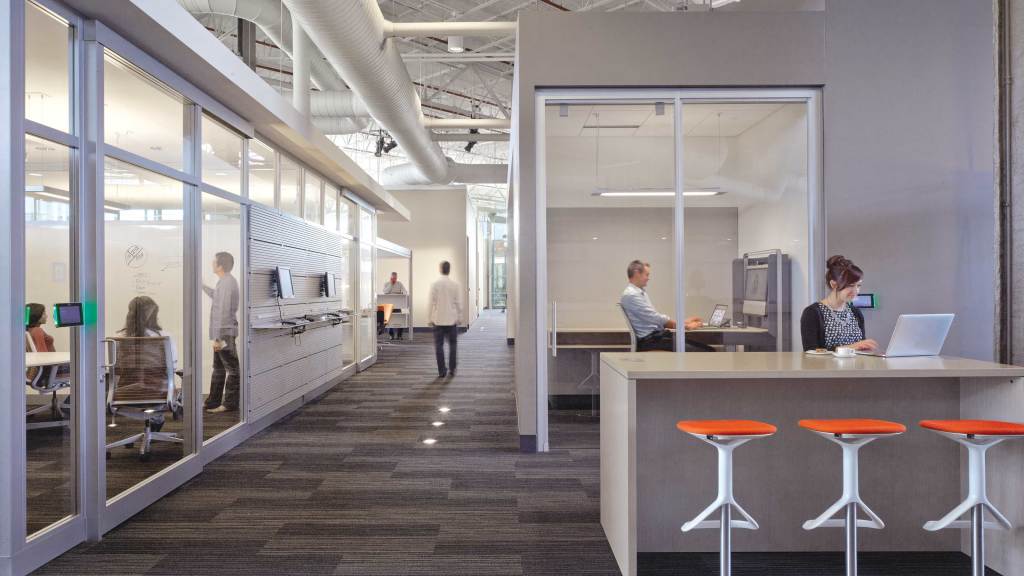
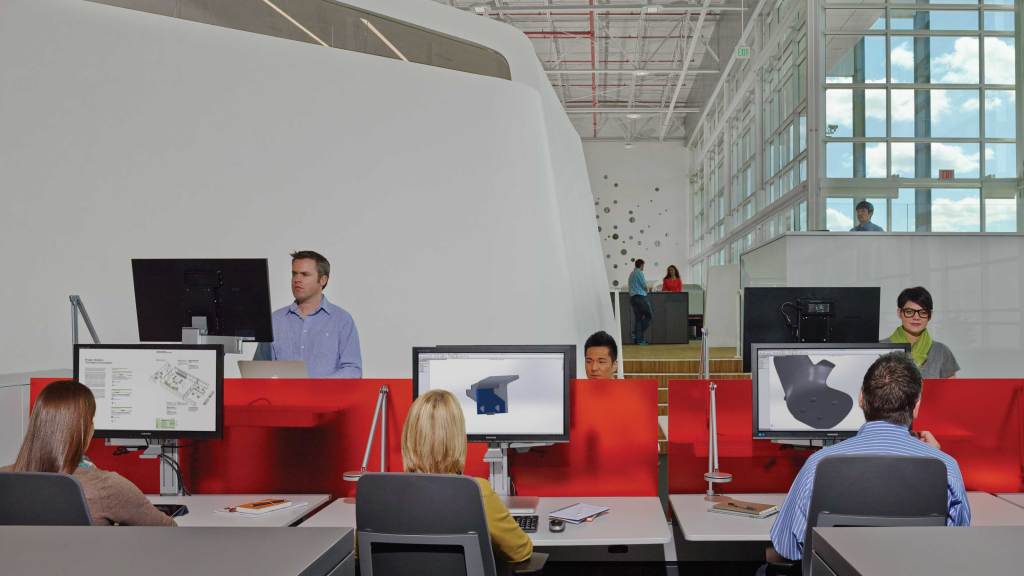
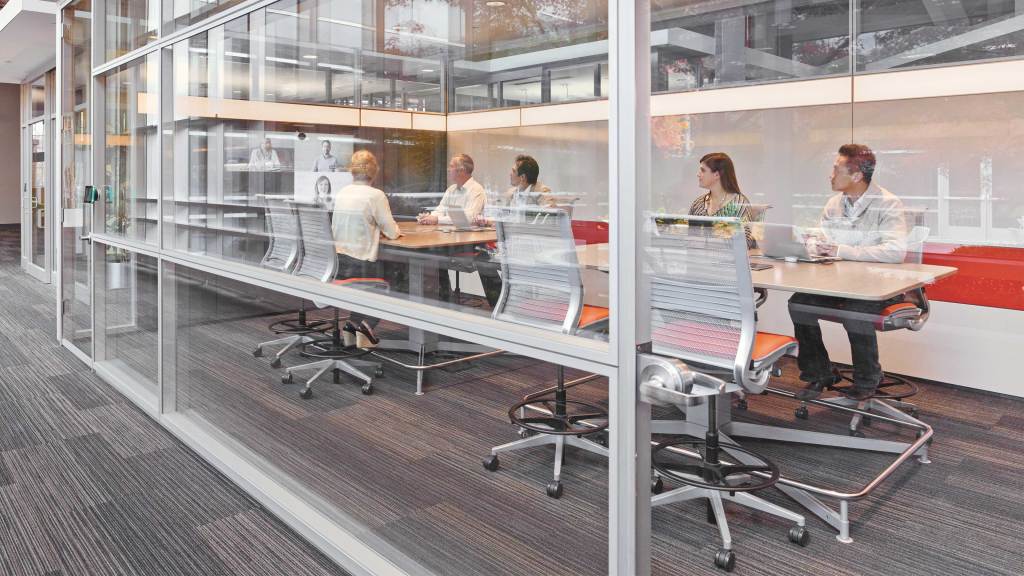
The global network of spaces includes areas for individual work and group work, some of which are “owned” by the individual or team if needed, and many that are shared. There is a blend of open spaces, along with spaces that are enclosed or shielded, so people can choose the degree of interaction they want. The Connect 12 project team understood that people need both privacy and interaction throughout their day, in varying degrees.
WHERE DO YOU BEGIN?
The cornerstone of the “best place” strategy and the first area to be introduced was a repurposed space. Previously an under-utilized cafeteria used only for morning coffee, lunch and afternoon break, the new WorkCafé is an on-site third place, as sociologist Ray Oldenburg would call it, with an informality and diverse user group. This is the “hub” for the campus and testing ground for several new concepts and applications.
WorkCafé combines open and enclosed spaces for small and large groups, individual workspaces, a cafeteria and coffee bar. It offers the functionality of a well-planned office with the vibe of a neighborhood pub. Here people meet, work, network, socialize and reenergize. “This space exemplifies what we mean when we talk about democratizing the space,” says Johnson. “It’s not a place where people reside; they’re hosted here. You can be comfortable, productive or social for a while, switch between work and respite, collaboration and private time.”
Food and beverages are available throughout the day in WorkCafé, but what makes the space popular is the diverse choice of spaces available for focus and collaborative work, as well as spaces that support social interaction and respite. A 24’ x 5’ media wall offers continually updated news from around the company and around the world. This concept was implemented not just at headquarters but in all our spaces, so workers in the U.S., for example, can learn about what’s going on in Malaysia or Moscow, and vice versa. media:scape collaborative settings help people share digital content more effectively, and access to power and Wi-Fi is ubiquitous.
Introducing the new workplace strategy with a space like the WorkCafé was unusual, compared to the more conventional approach of focusing on individual workspaces first, but it clearly worked.
“It’s no exaggeration to say that at Steelcase, everyone comes to WorkCafé,” says Johnson. “It’s a central, welcoming, multi-use space with a great buzz. You see leadership, people from other parts of the company, visitors, customers. You meet people face-to-face instead of over the phone or email, so it builds rapport and trust across the company. People said the space made them feel proud and that it demonstrated how much the organization really valued them as employees.
“We recommend to every company interested in culture change to build a WorkCafé and to build it first,” continues Johnson. “It set the tone for the rest of our campus reinvention by giving everyone the opportunity to experience what democratizing the space means, in a collective way, before anyone had their own personal spaces changed. It reflects the culture and behaviors we want people to adopt.”
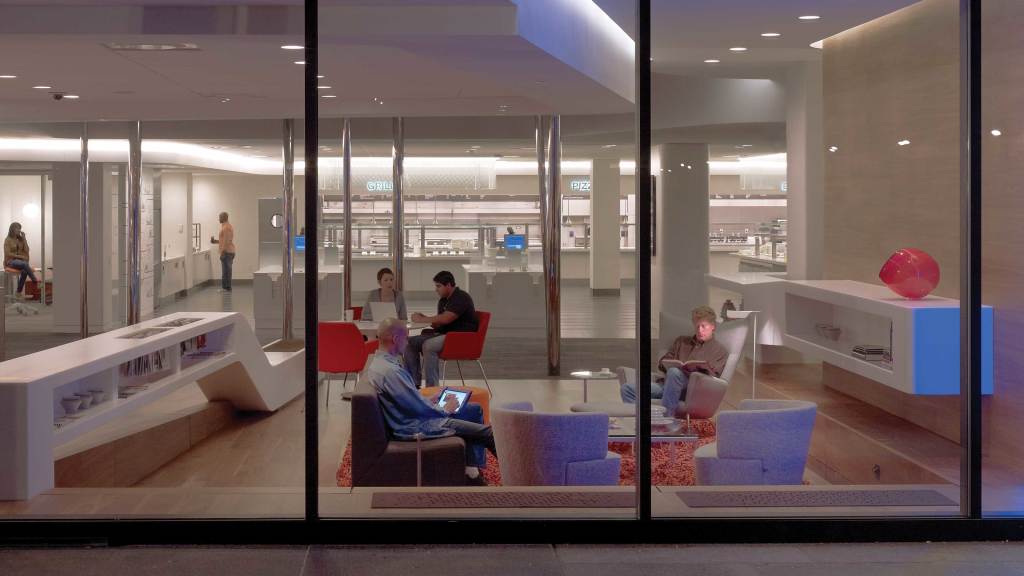
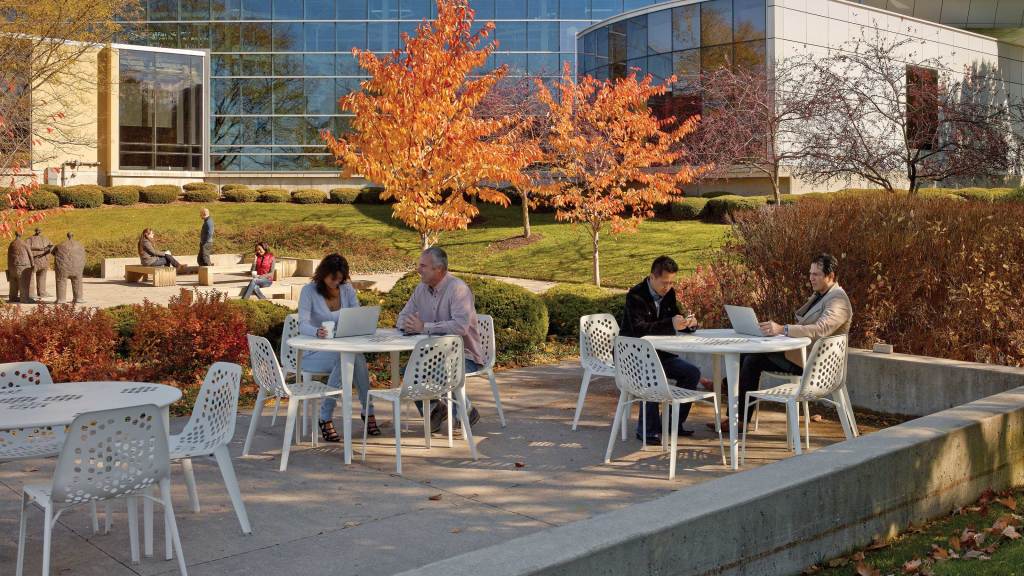
A NEW OFFICE, EVERY DAY
Before the campus reinvention, 95 percent of residents in our global headquarters had assigned desks. But given the mobile nature of work today, not all employees needed or wanted an assigned workstation. The assigned workstations that sat empty much of the time were not allowing that real estate to be fully leveraged and also impacted the outlook of employees – sitting among empty cubicles feels isolating and drains people’s energy without them even realizing it. Yet some people’s jobs required them to be at their desks most of the time, and they needed their own workspaces. To help identify which employees should shift to mobile work, we asked for volunteers. “It was important that employees felt like they had a voice in the decision, and that their voice was heard,” said Johnson. Not surprisingly half of the employees chose to give up their dedicated desks, knowing they would have greater flexibility.
Spaces that had previously been used for dedicated workstations could now be used for different types of work environments to support both focus and collaborative work, as well as the social needs of people. This change enabled the company to bring employees together in less space and, at the same time, give them more choice and control over where and how they work. For example, a 24,000 square-foot (2,230 square-meter) wing of the headquarters building that originally housed only one department was gutted and rebuilt for three groups: finance, procurement and quality. Another wing was similarly reinvented for sales support staff, bringing together teams that had never been able to be collocated before. It also incorporated videoconferencing spaces that allowed people to work informally with remote teammates on a daily basis. Both floors can serve more people now that employees can choose from workspaces anywhere on campus.
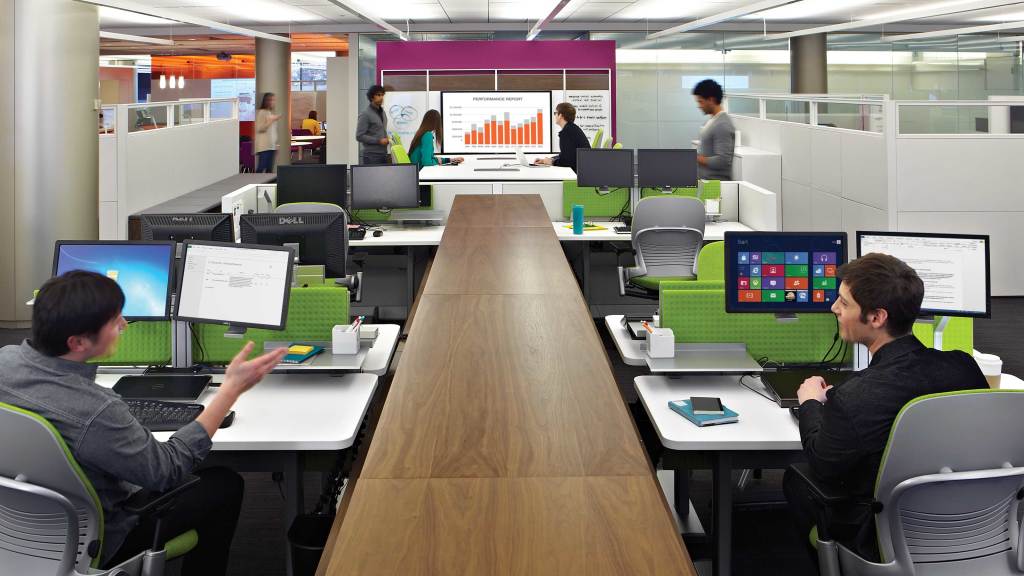
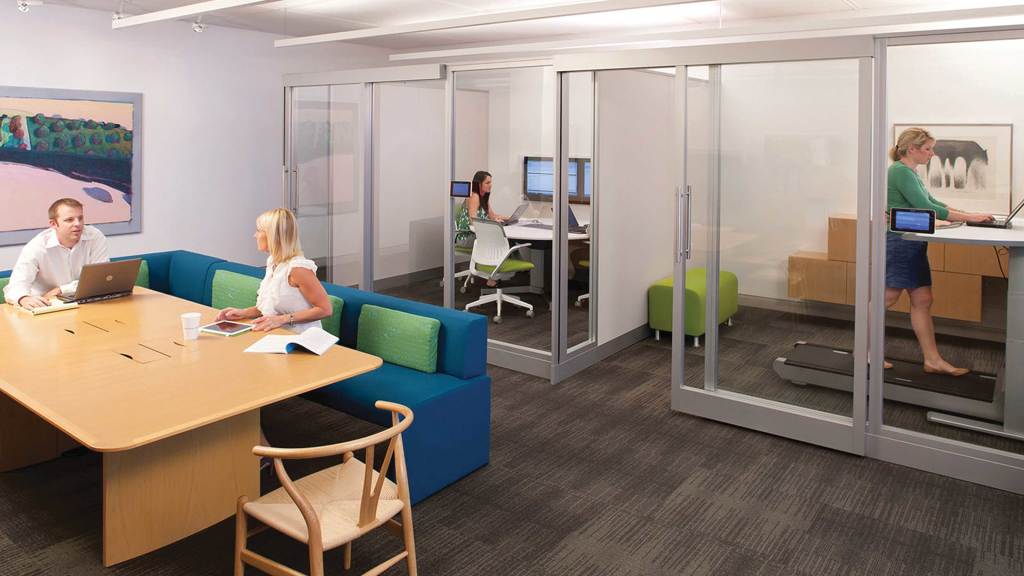
This was a very different way of working and it required managers and employees to better understand what this meant. “We used a series of engagements and online resources to help managers learn to lead differently, to set objectives and measure performance instead of counting heads and measuring seat time,” says Steve Wolfe, director of corporate human resources.
A pilot group of 80 employees received laptops, smartphones and training for a mobile workstyle. Later the group helped other employees prepare for the change of going mobile. “It wasn’t management telling employees how things would work, it wasn’t HR, it was their peers,” noted Wolfe. “People responded very positively to that.”
New work environments support a range of postures. Movement is physically energizing and mentally stimulating. Support for varied postures, along with more natural light in workplace interiors, an outdoor patio and other connections with nature, are some of the ways Steelcase leverages real estate to support employee wellbeing.
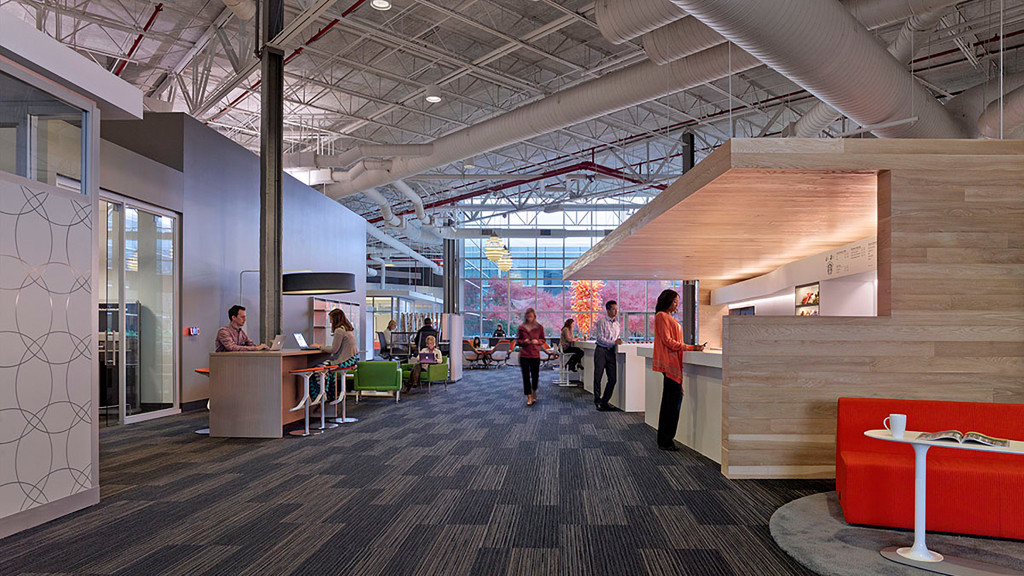
GLOBAL CONNECTION
Another newly repurposed place on our headquarters campus is the Innovation Center which, like all of our spaces, is a prototype to test new ways of working. It was driven by the organization’s need to thrive in a fiercely competitive global economy. “We wanted to confirm our belief that ideas get even better when we have a team that is not only diverse professionally or ethnically, but also geographically. People who come to the innovation process immersed in the sights and sounds of other cultures bring a deeper layer of insight to the problem at hand,” says Johnson.
The Innovation Center serves almost 300 local employees and distributed colleagues around the world. Since three-quarters of our product development projects are global and we have design studios on three continents, the center exemplifies how places can shape a global, integrated enterprise.
“Innovation is a physical activity. It depends on human interaction, exploration and experimentation,” says James Ludwig, Steelcase vice president of global design. Project team members, no matter where they are, “feel like they’re in the same room. Good interactions remove friction in the creative process and increase the likelihood that people will reach out to each other to solve problems. Innovation is rarely one, big ‘aha! moment.’ It’s nearly always an iterative process where people build on each other’s information and ideas.” (For more ideas about supporting distributed teams, see Making Distance Disappear.)
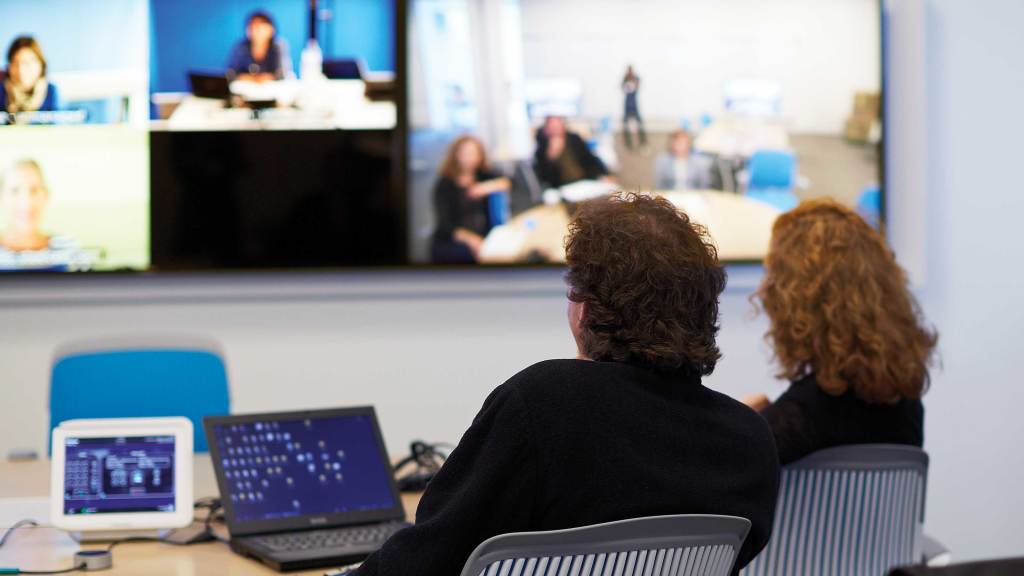
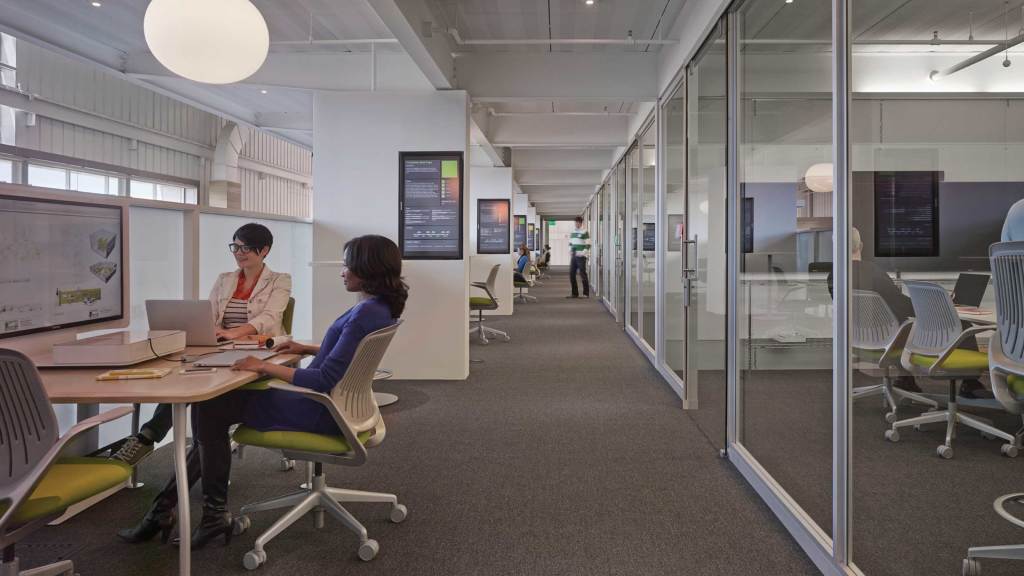
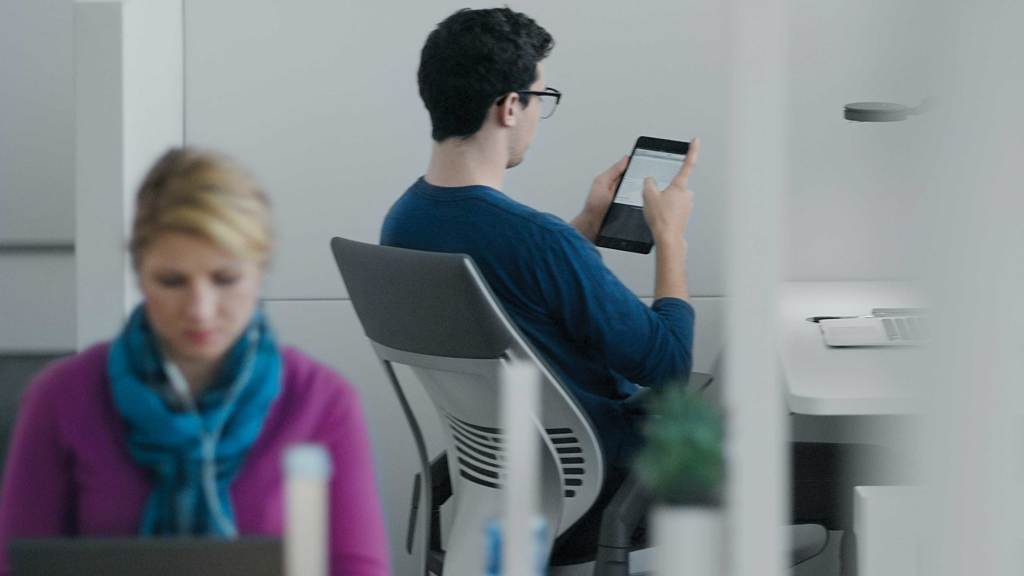
Group spaces rule here. Project rooms occupy 40 percent of the footprint, while “front porches” and “back alleys” support a variety of small group work activities.
Team members, including designers, researchers, product marketers, engineers and other staffers, keep in touch daily via telepresence. To avoid the typically formal and often awkward videoconference, employees can choose from a variety of configurations for their project rooms with café tables, lounge chairs and other furniture so participants can stand, sit, perch or walk around. Close-ups and one-on-one exchanges make gestures and facial expressions clear and help improve understanding. Plus, each project room also has space where people can break away from active collaboration but stay nearby to rejoin as needed. It all makes for videoconferences that are informal, collaborative and productive.
The center also includes R&D labs, a prototype studio, guest interaction rooms, mobile neighborhoods, enclaves and a café. “It gives people the variety of spaces and tools they need, yet the floor plate is simple and designed for evolution. We allow the campus spaces to ‘learn’ with the people who use them, and that makes for more resilient real estate,” says Johnson.
FEEDBACK LOOP
Workspaces ‘learn,’ adapt and better support culture change only if people support it. By benchmarking the company culture at the onset of the project, we can measure how our culture is evolving and adapt spaces as needed.
Arna Banack, a cultural anthropologist who works with us, says workspace affects many aspects of culture. “Space can have a direct impact on communication, collaboration, how employees understand the company’s mission and strategy, how they represent the brand, and much more.”
Positive changes are already apparent. Measurements of how well we make our vision a reality for employees has improved dramatically. Work spaces better reflect the company mission and purpose. “Some of our environments hadn’t been renovated in years, so business changes got ahead of how well some spaces performed and allowed our employees to perform,” says Johnson. “Employees can’t live the brand values if they’re not
immersed in them. Our spaces now reflect the new Steelcase: user-focused, innovative, the product of design thinking.”
Engagement, a measure of how well employees feel a sense of shared purpose, has also improved. “It was a strength in 2010 and it’s an even greater one now. That unites the company,” says Banack.
Steelcase leaders see tangible, bottom-line benefits. “Our sales support groups have been able to absorb double-digit growth in our business two years in a row, without increasing staff. It’s not more hours. It’s just easier to get things done now, to connect, collaborate and make decisions more efficiently,” says Eddy Schmidt, senior vice president.
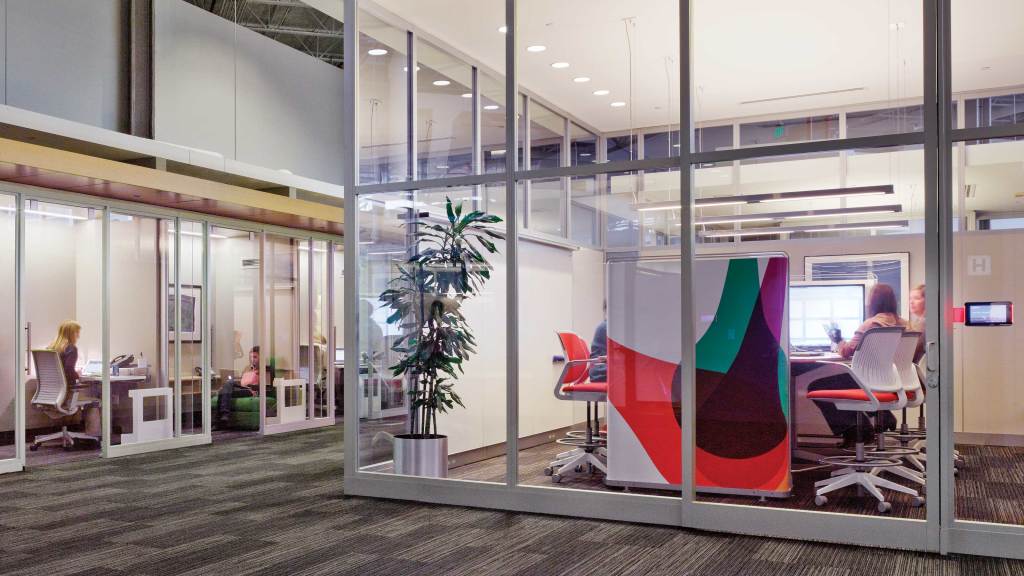
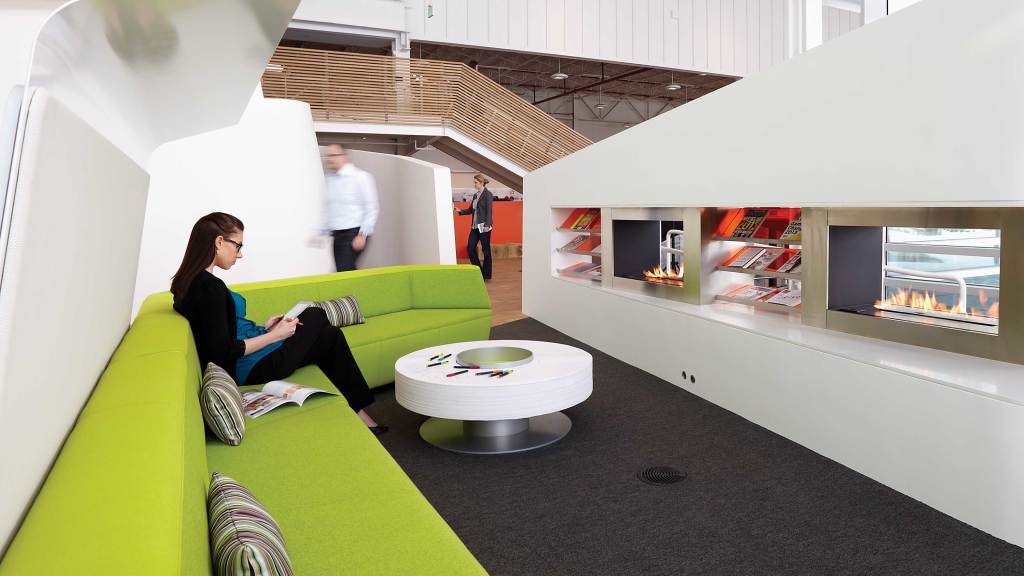
Dave Sylvester, chief financial officer, says feedback from his team is “off the charts.” Half of his staff is mobile, choosing shared benching workspaces as their daily home bases, and 62 percent report their workplace helps attract and retain employees.
Fine-tuning—reconfiguring a space here, changing a furniture application there—has helped, too. We learned that people needed more spaces for private conversation and focused work, and those changes have been made. Project teams also needed more spaces they could own for the life of a project, so more “we/owned” spaces were added. No one knows how creative knowledge work will change in the future, so our workplace is intended to be tested, and can evolve as needed.
MAKING CHANGE POSSIBLE
Changing company culture is difficult. The physical environment is not the only influencing factor, and Steelcase leaders recognize there’s work to be done on other fronts.
“Changing buildings is not enough, technology alone won’t get it done, and inspiring workspaces don’t create change on their own,” says Ludwig. “But they help make change possible. These spaces make sharing information faster and co-creating better. They help people to connect with the brand, the
organizational culture and each other.”
Five years after initial planning for the new corporate campus, no one is surprised by the results. “It’s changed how we live and work as an organization. It’s that simple and that profound,” says Ludwig.
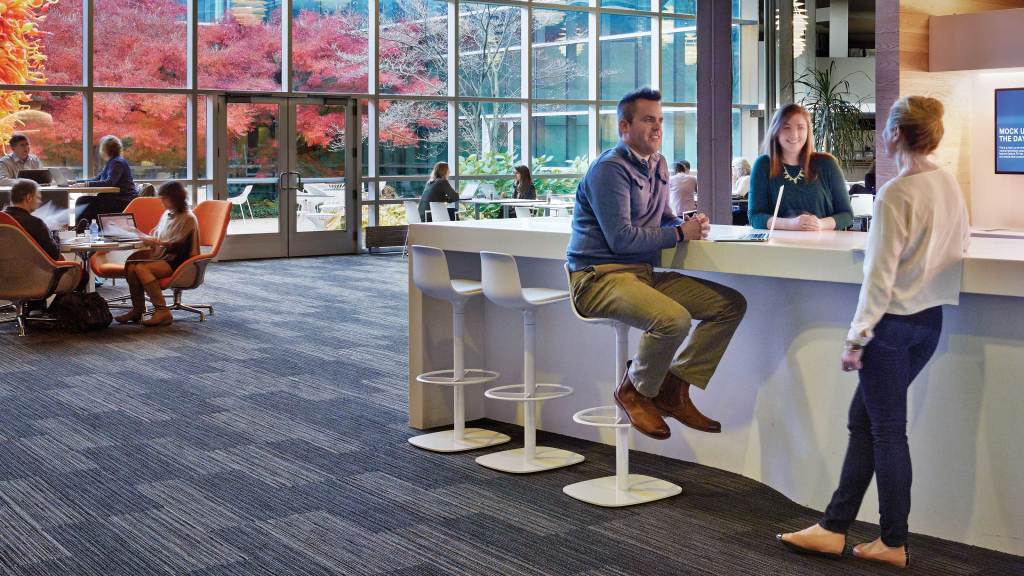
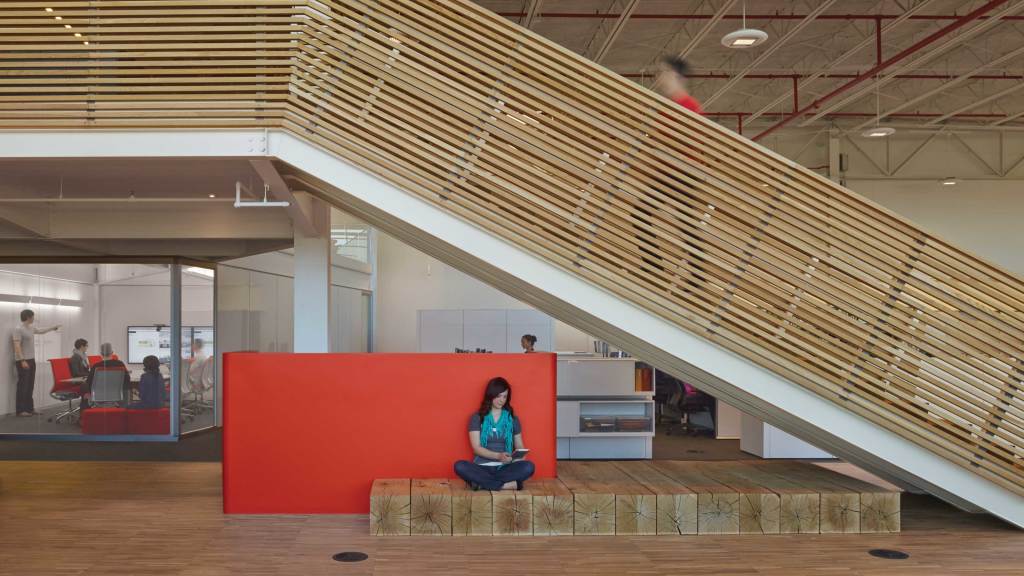
DRIVING CHANGE
By rethinking its real estate strategy, Steelcase was able to reduce the actual footprint of our corporate headquarters campus by 48% and our environmental footprint at the same time. But, more important, the results of pre- and post-Workplace Satisfaction Surveys indicate the impact the changes have made on people, processes and culture is far more valuable.
My workplace empowers the creation of new ideas
Company Informations:
Le Office Furniture Manufacturer
www.letbackrest.com
Address: No.12, Nanhua Road, LongJiang ,Shunde,Foshan, Guangdong, China (Mainland)
Email: sale@letbackrest.com
skype: kinmai2008

